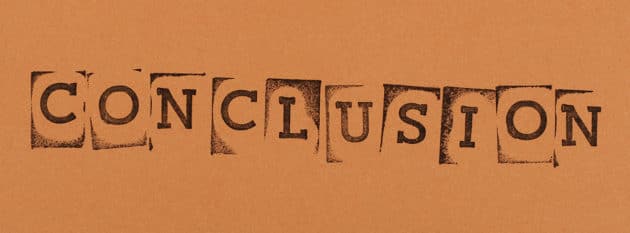At some point, every company will need to hire a web designer. 71% of businesses have a website, and if you plan on selling your product or service online (which you should), you’ll need to create a website that reflects your brand, highlight your offerings, and engages customers.
As far as building a website goes, companies have three choices: hiring an in-house web designer, bringing on a freelance web designer, or working with a web design agency.
In-house web designers are the most expensive but offer the most control and consistency. They’ll also be full-time employees, so you’ll have to factor in salary, benefits, and other full-time employee costs.
Freelancers and agencies are comparatively cheaper, with the former less expensive than the latter, but there are potential flexibility and quality issues with each. In this article, we’ll help you weigh the pros and cons to make your decision.
In-House Web Designer

Due to the high costs associated with full-time employees, in-house web designers are the least common web design solution. However, if you’re running a large business that needs total control over website design (and you have a continuous need for a designer), this may be your best option.
Related: How to Use Web Design and Content Optimization for User Engagement?
Benefits of Hiring an In-House Web Designer
The main benefit of an in-house web designer is the control you have over your final product. You can create a consistent look and feel for your site, add new features whenever you need, and ensure all the design elements align with your company’s overall brand identity.
Even if your brand changes, your web designer will be there to update the site. If you and other company decision-makers are unsure of where to take the brand or site structure, they can even add feedback that will drive your business forward.
Another benefit to having a web designer on staff is that you’ll have continuous, direct contact with them (versus working with agencies or freelancers). This makes communicating your ideas more manageable and ensures everyone’s on the same page.
The companies that benefit most from in-house design resources are those in highly specialized industries. A company selling web accessibility software, for example, would need a designer who is well-versed in WCAG compliance, design principles as they pertain to people with disabilities, and other skills that would have to be constantly updated.
Drawbacks of Hiring an In-House Web Designer
The downside to having an in-house web designer is that it’s the most expensive option. You’ll have to factor in salary, benefits, office space, and other associated costs, all of which add to the final cost.
According to 2023 data from Payscale, the average base salary for a web designer is $53,476. Of course, this isn’t where the expense ends. Full-time employers have other financial responsibilities for their employees, such as:
- Health and dental insurance benefits.
- 401(k) match contributions.
- Paid vacation and sick days.
- Overtime pays.
- Hiring costs (which average around $4,000).
An in-house web designer is easily a six-figure investment. Keep in mind that unless you have a dedicated web design team, one person doesn’t always have the skills to do everything. If your company uses an entirely custom-built website or you manage multiple different sites (or you plan to in the future), you’ll have to multiply the above costs by two or three.
Even if you have the resources for a web designer and feel ready for the undertaking, it’s important to consider whether or not you actually have enough work to justify keeping them around. You may have a seemingly large project in front of you, but unless you can guarantee a steady stream of work, you’ll still be paying the same amount for idle time.
Who should hire an in-house web designer?
In-house web designers are best suited to large companies with continuously changing needs and a high volume of landing pages, campaigns, and other web-based projects to keep them busy. Examples include:
- Enterprise tech companies.
- Major e-commerce retailers and brands with extensive product lines.
- SaaS companies need to keep their content fresh and dynamic.
- Businesses operating in highly regulated or specialized industries (e.g., healthcare, finance, web accessibility).
- Companies with extensive web-based platforms (e.g., Upwork, Airbnb).
Web Design Agency

Hiring a reputable web design agency is the route companies take when they have a higher budget and multi-faceted needs, but they don’t have the ongoing need for web design talent. Web design agencies serve every customer segment from solopreneurs to enterprises.
Benefits of Hiring a Web Design Agency
“If you have ever wondered how much professional web design costs, you might be surprised to learn that the majority of the price depends on the time the team spends working on your project.” – as elaborated by Mark Figlozzi, the founder of Bizango, in one of his recent articles.
On the surface, hiring a web design agency seems expensive. According to recent data, a simple custom website design costs between $15,000 and $30,000, while bigger websites cost between $40,000 and $75,000. Websites with specialized needs (such as HIPAA compliance or software integration) can cost upwards of $100,000 to design and build.
However, that cost is often a worthwhile investment, depending on the project size and complexity level. It’s also comparatively cheaper than working with an in-house designer for the same cost.
Web design agencies have their own full-time teams with specialized skill sets. So, you get a wide range of expertise for the same cost (or less) in comparison with one full-time web designer. They’re well-versed in web design and development best practices, have a deep understanding of multiple coding languages, and have access to the latest tools and technology. This ensures that the website will meet your organization’s needs, no matter how technical or specialized its requirements.
An agency also comes with an added bonus: scalability. You only pay for what you need now (basic website design) and can add specialized services (SEO, branding, web maintenance). This flexibility allows businesses to test the waters without breaking the bank or committing to a full-time employee.
Agencies often work in tandem with marketers and strategists. If you decide to work with a full-service agency, your web design team is part of a larger collaborative effort to create a comprehensive marketing strategy for your organization. This allows organizations to build an entire ecosystem around their website, from content creation and SEO optimization to branding and storytelling.
See also: 8 Top UX Design Principles for Web Applications.
Drawbacks of Hiring a Web Design Agency
Although web design agencies are comparatively low-cost, they are cost-prohibitive for lots of new entrepreneurs, startup founders, and small businesses. If you’re on a tight budget and don’t have the financial resources for an agency, it’s worth considering hiring a freelance web designer instead.
Aside from costs, the main drawbacks revolve around skills and flexibility. Some web design companies are highly specialized (and they charge a premium for it), but there is no guarantee (or expectation) that the agency you hire will truly understand your product, service, or vision for your site.
When working with an agency, it is the customer’s responsibility to be easy to work with. Most web design teams set limits on revisions and iterations, and if the customer exceeds those limits, they will be charged additional fees. Since web design agencies tend to work on projects sequentially, there is often no room for changing direction or pivoting mid-project if the end results don’t align with your expectations.
Who should hire a web design agency?
Individuals and companies considering hiring a web design agency need to consider their goals, budget, time frame, and level of technical expertise needed for the project. They must also be willing to work within an agency’s constraints. Web design agencies are a great choice for the following kinds of organizations:
- Mid- to large-sized companies with omnichannel marketing strategies but limited in-house infrastructure.
- Organizations that need complex coding and specialized services, such as HIPAA compliance or software integration.
- Businesses on tight deadlines don’t have the time or resources to create their own web designs from scratch.
- Startups and entrepreneurs build web interfaces, such as marketplaces or mobile apps.
- Scaling SaaS companies expanding their marketing efforts or raising capital.
Freelance Web Designer

Freelance web designers are usually the lowest-cost option, and they’re more flexible than agencies. However, they come in all shapes and sizes; some are reliable professionals who can take a website from zero to hero, while others are difficult to deal with and unresponsive.
Benefits of Hiring a Freelance Web Designer
About one in three Fortune 500 companies works with freelancers on Upwork, and a significant number of others freelance web designers off the platform. By 2027, a projected 86.5 million freelancers will make up more than half of the U.S. workforce. Freelancing has quickly become the fastest, easiest, and lowest-risk way to hire someone.
Assuming you hire a solid freelancer, they tend to be more flexible and responsive, especially if you establish a good working relationship in the beginning. Freelancer engagements usually entail a no-strings-attached approach, meaning you can engage them for however long or short you need.
Even if you don’t communicate with them for months, you can generally pick up where you left off. If they don’t work out, there’s no paperwork and additional costs for you to part ways like there is with full-time employees.
Another huge advantage of freelance web designers is their flexibility. Unlike agencies, which approach web design projects systematically, freelancers can get to know your business and adapt to its current processes. While agency design teams work on a nine-to-five, Monday-through-Friday schedule, you can expect freelancers to respond quickly, even if you need them at odd hours.
Drawbacks of Hiring a Freelance Web Designer
While freelancers are typically less expensive to work with than professional agencies, their rates vary wildly. On Upwork, freelance web designers cost between $15 and $30 per hour on average, although some have hourly rates well over $100. Most web designers on Dribbble charge between $30 and $85 per hour on projects, while other sources show designers charging hourly rates upwards of $150.
The risk that comes with hiring a freelance web designer is that you don’t know their level of expertise until you actually start working with them. It’s easy to get stuck with someone who doesn’t really understand your business or has the technical chops to deliver a high-quality website on time.
Who should hire a freelance web designer?
Almost every type of company works with freelance web designers, even those with full in-house design teams. As the backbone of a web design project, some businesses that could benefit from freelancers include:
- Startups that are tight on cash need to roll a website out quickly.
- Established companies that need to run a one-off campaign.
- Organizations with limited in-house resources, such as non-profits or small businesses.
- Small tech companies need specialized coding, such as blockchain startups.
- Any type of small business whose website only requires a few functional pages.
Related: Top UX and UI Design Trends of the Year 2023.
Final Thoughts

Ultimately, the decision between hiring a freelance web designer, or an agency, or bringing the work in-house should be based on your organization’s size, structure, and needs. If you’re working with a limited budget and only need someone for one project, freelancing is probably your best bet.
However, larger projects that require multiple team members are typically better suited for agencies. Realistically, you only need to bring your web design in-house if you have a large, complicated website that requires frequent updates. Using the information in this guide, you should be able to make an informed decision about which route is right for your organization.





